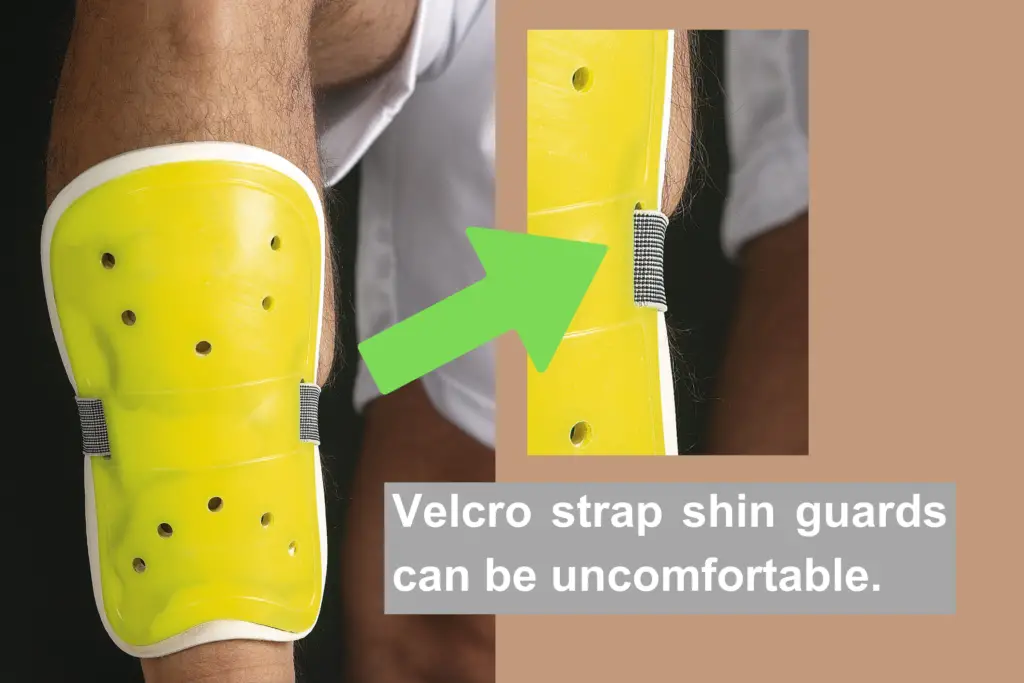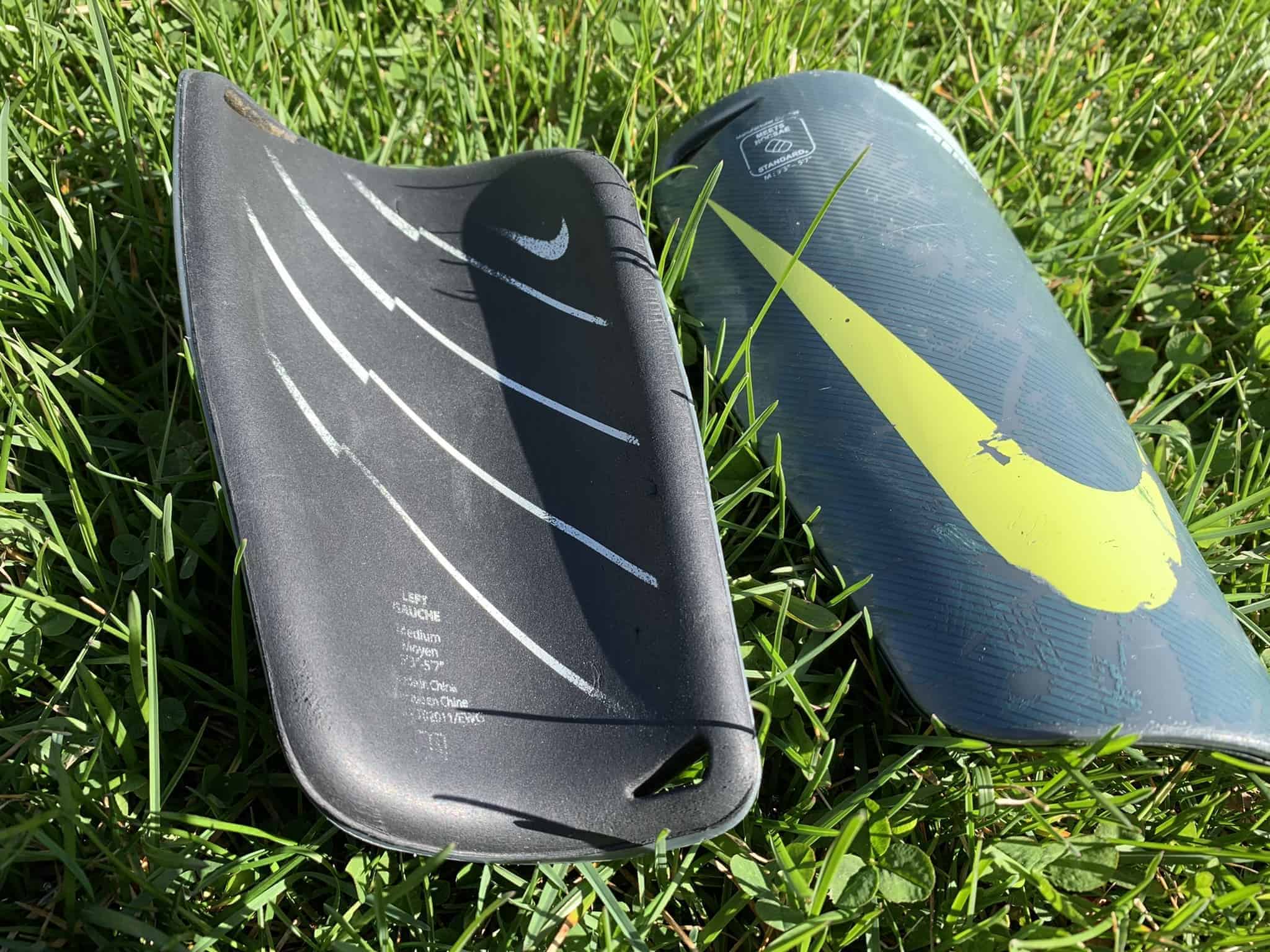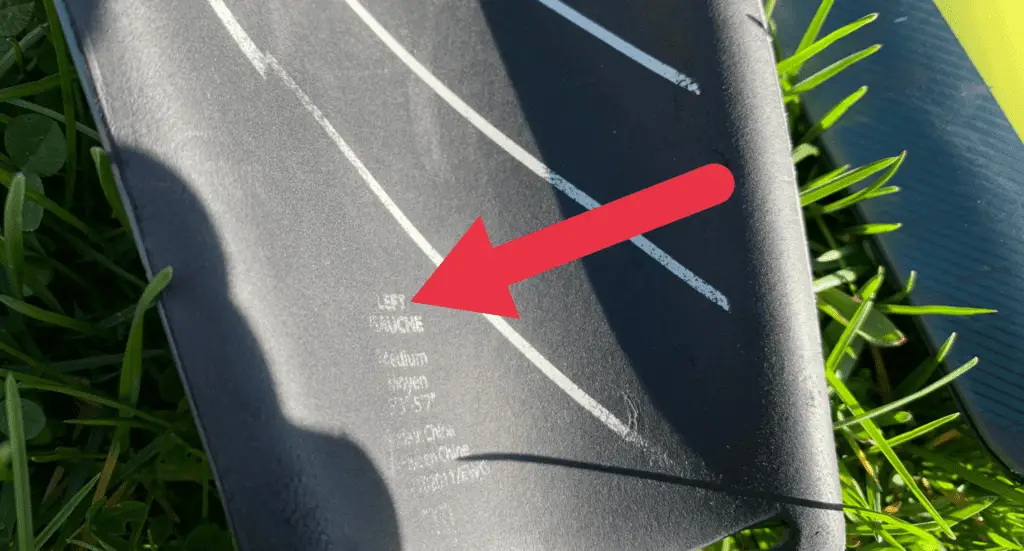I don’t know about you, but I can’t stand constantly fixing my shin guards during games or training. Keeping them from slipping is something we’ve all struggled with. If you’re wondering how to keep your shin guards from slipping, you’ve come to the right place.
Wear your shin guards under your socks. Keep your shin guards from slipping by wearing high-quality socks, using athletic tape or velcro straps, wearing them on the correct leg, buying the right size, using pre-wrap, or buying shin guard sleeves. Wear them underneath your socks.
These seven tips will help you keep your shin guards in place. Consider using two of the listed tips at the same time if you’re really struggling with this issue.
Related: How to Dry Soccer Cleats Fast in 6 Steps
Table of Contents
Do you wear shin guards under or over socks?
You can wear your shin guards however you’d like. Over or under your socks, it doesn’t matter, and there aren’t rules against it. But what’s the right way to wear them; over or under your socks?
You wear shin guards under your socks, not overtop of them. All shin guard types, including velcro straps, ones that wrap around the ankle, and especially slip-in shin guards, should be worn underneath the sock to keep them from moving around.
Although there are no rules saying you must wear shin guards beneath your socks, it’s more common to wear them this way. Wearing them overtop of your socks makes them move around more and slip down your leg.
It’s easier to keep your shin pads in place when you wear them underneath your sock. Slip-in soccer shin guards require you to wear them under your socks. Velcro soccer shin guards or ones with an ankle guard should also be worn beneath your socks.
The velcro strap shin guards can be uncomfortable to wear underneath the sock, as the strap can scratch your skin. If that happens to you, try loosening the velcro strap or wear them over top of your socks.
Slip-in shin guards vs. Velcro strap shin guards
You may prefer one type of shin guard over the other, but what sets them apart from each other, and which is better?
Let’s compare the differences between slip-in shin guards and velcro soccer shin guards based on the following criteria:
- Comfort
- Protection
- Style
- Weight
- Thickness
Comfort
In terms of comfort, my vote goes to the slip-in shin guard. This shin guard type fits the shin’s form better than velcro strap shin guards. Most slip-in shin pads come with two shin guard sleeves to wear over the top of them, reducing how much they move around while playing.
Although velcro strap shin guards slip less, the strap can be uncomfortable when it rubs against the back of your leg after putting socks on or if it’s strapped too tightly.

Protection
When it comes down to it, shin guards are meant to protect you, and the velcro strap guards are the winners of this category. Velcro shin guards are generally bigger than slip-in shin guards and cover more of your leg.
Velcro strap shin guards sometimes have extra padding that the ankles for added protection, whereas slip-in shin guards can only protect the shins.
Style
Which one looks better? Well, that’s up to you. Slip-in shin guards have a minimalist look to them; they’re low-profile and easy to put on and remove. Conversely, velcro soccer shin guards are bigger and, in my opinion, look clunky.
Weight
Slip-shin guards are lightweight compared to ones with a velcro strap. They fit the shin, making them feel even light, almost as if you’re not wearing them. On the other hand, the heavier weight of the velcro strap shin pads adds protection and durability.
Related: How Long do Soccer Cleats Last? 6 Long-Lasting Tips
Thickness
Velcro shin pads are thicker and more durable than slip-in shin guards. Velcro strap guards are less likely to get damaged while playing and should last longer than other types, although most shin guards should last for multiple years.
Slip-in guards generally use soft but sturdy padding on the part that touches your shin, whereas velcro guards use softer, cotton-like padding.
| Criteria | Slip-in shin guards | Velcro strap shin gaurds |
|---|---|---|
| Comfort | Form-fitting; easy to put on and take off | Don’t fit the shin’s shape; hard to put on and take off |
| Protection | Less protection | More protection |
| Style | Minimal; aerodynamic | Clunky; can be worn overtop of socks |
| Weight | Lightweight | Heavy |
| Thickness | Thin but still protective and durable | Thicker; generally more durable |
Can you stop your shin guards from slipping down?
At the end of the day, your shin guards will move around under your sock at least a little, no matter what you do. The goal is to minimize the shin guard slippage you experience during games.
You can stop shin guards from slipping down by using tape, velcro, or shin guard sleeves to keep them from moving underneath your socks. Buying high-quality socks, using the right-size shin guards, and making sure each one is on the correct leg are other ways to stop them from slipping.
Slip-in shin guards move around a lot because of how they’re made. One potentially permanent solution to slipping shin guards is to buy a pair with built-in velcro straps and ankle support.
These types of shin guards are generally bulkier, and some people consider them uncomfortable, but they don’t slip off your shin nearly as much.
Combining any tips from the above list will keep your shin guards in place. Everyone is different; find a method that works for you.
7 tips on how to keep your shin guards from slipping

Keeping your shin guards from moving around underneath your sock is important for games. Doing this reduces the number of times you need to bend over and fix them on the field, keeping you focused on the important aspects, like scoring goals or defending properly.
Here are seven helpful, inexpensive, and easy tips for keeping your shin guards in place.
- Wear quality soccer socks
- Put soccer shin guard tape overtop of your socks
- Use velcro straps on the outside of your socks
- Make sure each shin guard is on the correct leg
- Buy the right-sized shin guards
- Wrap them in pre-wrap before putting your socks on
- Buy shin pad sleeves
Wear high-quality soccer socks
Believe it or not, your soccer socks play a role in the comfortability and functionality of your shin guards. Too loose of soccer socks or ones that continuously slip down affect how well your shin guards will stay in place. If your sock is too loose, your slip-in shin guards won’t stay put and will slip down your leg.
Wearing tighter soccer socks is a simple solution to this problem. Start with this before you invest in any other problem-solvers on this list.
Put soccer shin guard tape overtop of the socks
Shin guard tape is an easy fix for slippery shin guards. Consider using soccer shin guard tape if your shin guards keep slipping. After you put your socks on over your shin guards, apply tape directly below the bottom of your shin guard. Don’t make it too tight to where it cuts off circulation.
Do not use duct tape for this because it’s too tight. Likewise, don’t use masking tape, as it’s too loose, and the adhesiveness doesn’t last an entire game. In my experience, if you don’t have soccer shin guard tape, electrical tape works well; remember not to tape your shin guards too tight.
Use velcro straps on the outside of the socks
If you’re looking for a more sustainable solution to keeping your shin pads from slipping, buy yourself some velcro shin guard straps. These come in thin or thick options with various colors to match your socks. They function the same as tape in that you wear them over your socks, just below your shin guard, to keep them from slipping.
I wear these often when I play. I use my black or white pair, depending on my team’s uniform that day. Velcro straps are reusable and one-time purchases, whereas tape requires multiple purchases. These straps are a more cost-effective solution to slippery shin guards.
Make sure the shin guards are on the correct leg
This may seem silly, but make sure you wear your shin guards on the correct leg. There is usually a diagram on either shin guard displaying on which leg to wear it; right or left. Otherwise, shin guards have either an “L” for left or “R” for right on the padded side that goes on your leg. Look for either of these indicators to ensure you wear them on the proper leg.

Buy the right size shin guard
Another reason your shin guards might not stay up is because you’re wearing the wrong size. Buy the correct size shin guard to keep it from slipping down your leg. Buying too big of a shin guard will be uncomfortable and interfere with your foot when you kick the ball. Too small shin guards can slip easily and won’t stay in place.
Buy shin guards that cover your shin but don’t go down to your ankle or up to your knee.
Wrap them in pre-wrap before putting socks on
Another way to prevent your shin pads from moving around is to secure them with pre-wrap. Place the shin guard on your leg before you put your socks on. Wrap the pre-wrap around your leg and shin guar, securing it in place. Don’t wrap it too tight that you cut off circulation.
After you do that, put your sock on overtop. Throw the pre-warp away when you’re done with training or your game.
Buy shin pad sleeves to wear between the shin guard and sock
One of my best decisions for slippery shin guards was buying shin pad sleeves. Wear these underneath your sock, over top of your shin guards. The sleeve gives your shin guards a tighter fit and keeps them from moving around your leg. They don’t require tape over your sock, and the color doesn’t matter.
Unlike the pre-wrap method, shin pad sleeves are reusable.
Does shin guard tape have to match your sock color?
The color of your shin guard tape or straps must closely match the color of your socks. It does not have to be perfect.
